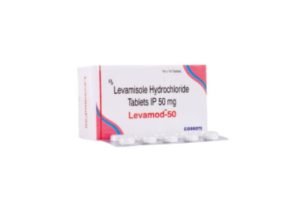
Chloramphenicol: Full Review
Chloramphenicol is a broad-spectrum antibiotic with significant historical importance, though its use today is limited due to its potential for severe side effects. It is effective against a wide range of Gram-positive and Gram-negative bacteria, as well as anaerobes. Chloramphenicol is used primarily for life-threatening infections when no other antibiotic options are available.
1. Mechanism of Action
Chloramphenicol works by inhibiting bacterial protein synthesis. It binds to the 50S ribosomal subunit, preventing peptide bond formation between amino acids, which halts protein synthesis. This mechanism allows it to be bacteriostatic (inhibiting bacterial growth) against most organisms, although it can be bactericidal in high concentrations or against highly susceptible bacteria like Haemophilus influenzae, Neisseria meningitidis, and Streptococcus pneumoniae.
2. Uses
Chloramphenicol is primarily reserved for severe infections due to its risk profile. Some common indications include:
- Typhoid fever: Caused by Salmonella typhi, chloramphenicol is effective, although other antibiotics are preferred today due to safety concerns.
- Bacterial meningitis: In certain situations where other antibiotics are ineffective, chloramphenicol can be used.
- Rickettsial infections: Such as Rocky Mountain spotted fever, when tetracyclines are contraindicated.
- Conjunctivitis (eye infections): Chloramphenicol is available as eye drops or ointment for bacterial eye infections.
- Anaerobic infections: Particularly in cases of brain abscesses or intra-abdominal infections.
- Severe sepsis: Particularly when caused by multidrug-resistant organisms and when other treatment options are not available.
3. Dosage and Administration
Chloramphenicol can be administered in various forms, including oral, intravenous, and topical (eye drops/ointment).
- Oral/IV: For systemic infections, the usual dose ranges from 50 to 100 mg/kg/day, divided into 4 doses.
- Topical: Chloramphenicol eye drops or ointments are typically applied 3 to 4 times per day for bacterial conjunctivitis.
Dose adjustments are required for patients with liver or kidney impairment, as chloramphenicol is metabolized in the liver and excreted by the kidneys.
4. Contraindications
Chloramphenicol is contraindicated in:
- Neonates: Due to the risk of Gray baby syndrome.
- Patients with hypersensitivity to chloramphenicol.
- Patients with bone marrow suppression or a history of blood disorders.
- Pregnancy: It is classified as Pregnancy Category C, so it should be avoided unless absolutely necessary.
5. Side Effects
Chloramphenicol is associated with several serious side effects, which have led to its limited use:
- Bone marrow suppression: This is the most concerning side effect, as chloramphenicol can cause dose-dependent reversible bone marrow suppression and, more rarely, aplastic anemia, which is often irreversible and fatal.
- Gray baby syndrome: This condition occurs in neonates who lack the ability to metabolize the drug properly, leading to cyanosis, respiratory distress, and death.
- Gastrointestinal disturbances: Such as nausea, vomiting, and diarrhea.
- Optic and peripheral neuropathy: Rarely, long-term use can lead to nerve damage.
- Hypersensitivity reactions: Rash, fever, and angioedema may occur.
6. Drug Interactions
- Cytochrome P450 inhibitors: Chloramphenicol inhibits certain liver enzymes (CYP450), which can increase the levels of drugs like warfarin, phenytoin, and oral hypoglycemics.
- Bone marrow suppressants: Combining chloramphenicol with other drugs that suppress bone marrow (like chemotherapy agents) can increase the risk of toxicity.
- Vitamin B12 and folic acid: Chloramphenicol may interfere with their function, leading to a worsening of blood disorders like anemia.
7. Special Precautions
- Blood monitoring: Regular monitoring of blood cell counts is essential during long-term chloramphenicol therapy to detect early signs of bone marrow suppression.
- Liver and kidney function: Dose adjustments may be needed for patients with liver or kidney impairment.
- Topical use: While less risky, even topical chloramphenicol can be absorbed systemically, so it should be used cautiously, particularly in infants.
8. Resistance
Bacterial resistance to chloramphenicol can develop through various mechanisms, such as:
- Enzymatic inactivation: Bacteria can produce chloramphenicol acetyltransferase, which inactivates the drug.
- Efflux pumps: Certain bacteria can pump the drug out of the cell, reducing its effectiveness.
However, despite resistance, chloramphenicol remains effective against many serious infections, particularly in regions where it is one of the few available treatments.
9. Storage and Stability
Chloramphenicol should be stored at room temperature, away from moisture and light. The reconstituted IV solution should be used within 48 hours if stored in the refrigerator.
10. Summary
Chloramphenicol is a potent antibiotic with a broad spectrum of activity, but its use is limited due to serious side effects such as bone marrow suppression and Gray baby syndrome. It is used in life-threatening infections where other antibiotics are ineffective or unavailable. Close monitoring of blood counts and liver function is crucial during treatment to minimize risks. Despite its potential dangers, chloramphenicol remains an important option in treating certain bacterial infections, especially in resource-limited settings.







